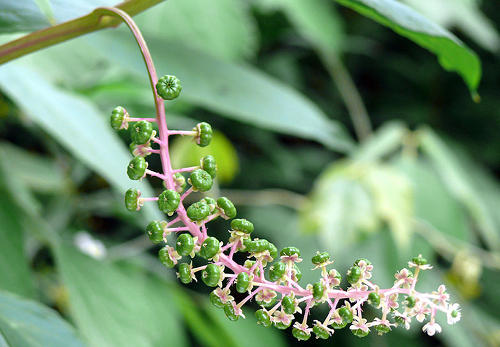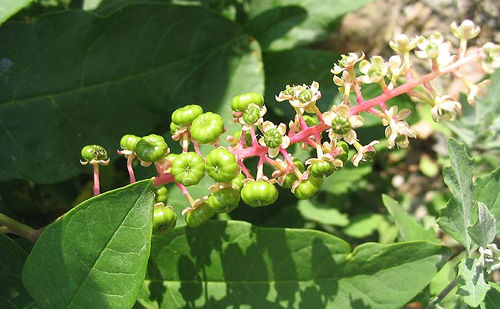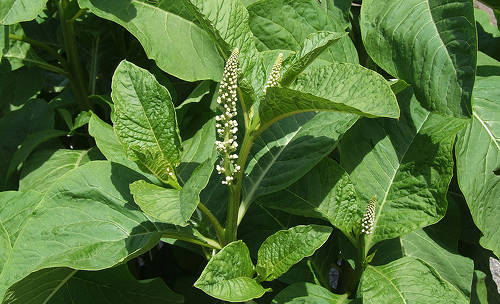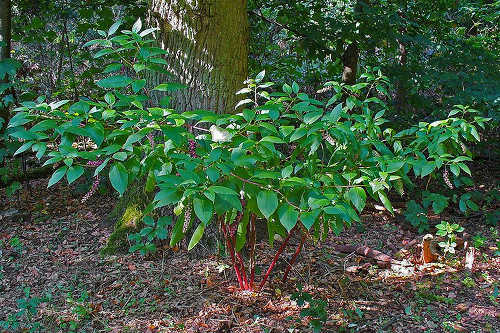
Names
Phytolacca americana, Common Pokeweed
Description
Perennial that looks tree-like and can grow up to ten feet. Stalk is smooth, hollow and deep red / purple. Leaves are large and elliptical and alternate on stem. Flowers grow in drooping clusters and are white / green. Fruit is purple and grape-like and droop from plant.

Concern Level
High because it is palatable to grazers.
Toxic Parts
The entire plant is toxic, concentration of toxins in the roots.

Symptoms
Burning of the mouth, stomach pain, bloody diarrhea, gastrointestinal upset, colic, birth defects, tumors.
Danger
Contains a phytolaccotoxin alkaloid which can be fatal.

More Information
*It should be noted that we are not veterinarians. This information is written specifically for horses and should be used for reference purposes only. If you think your horse has eaten something toxic call your vet right away.
